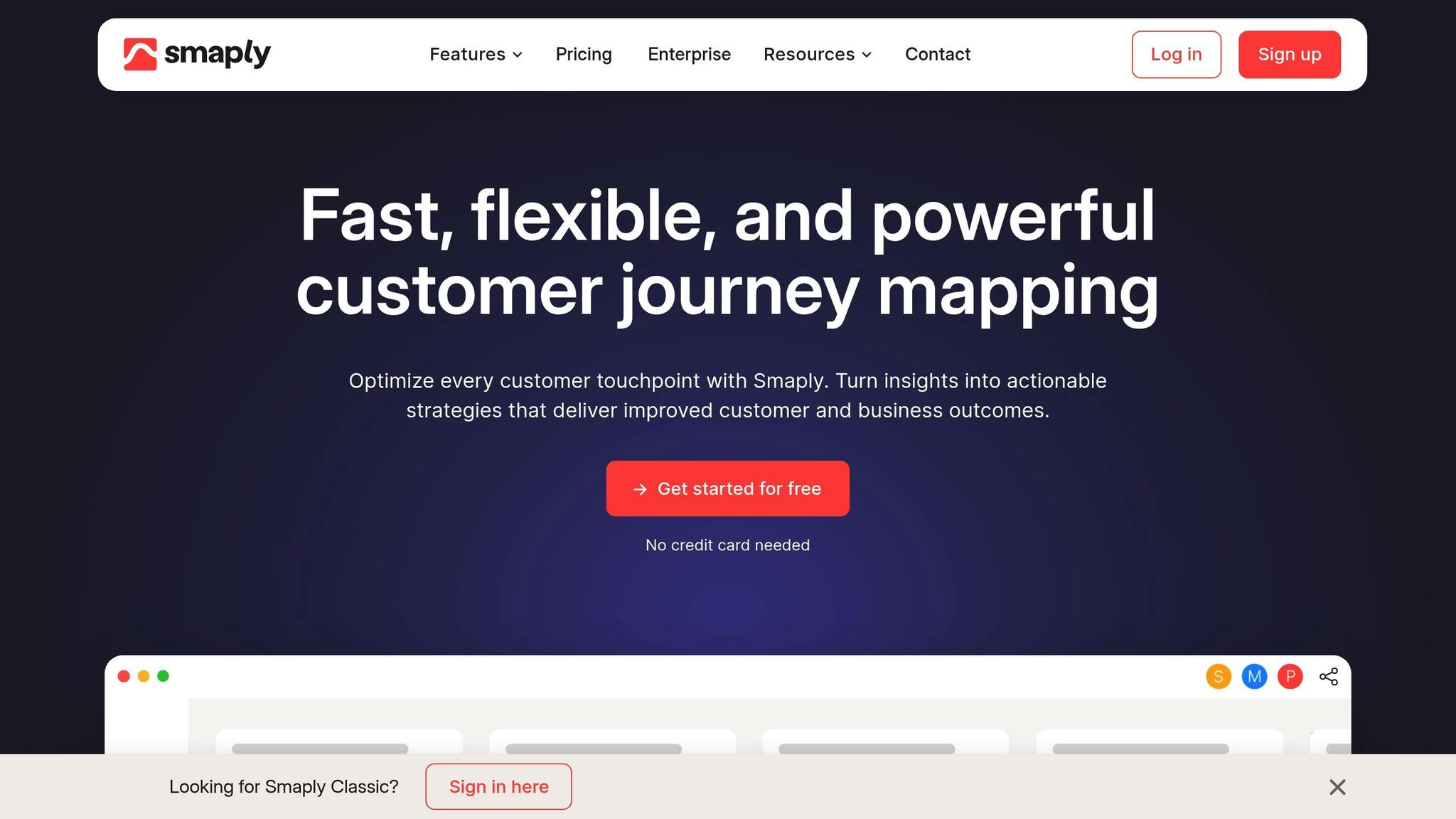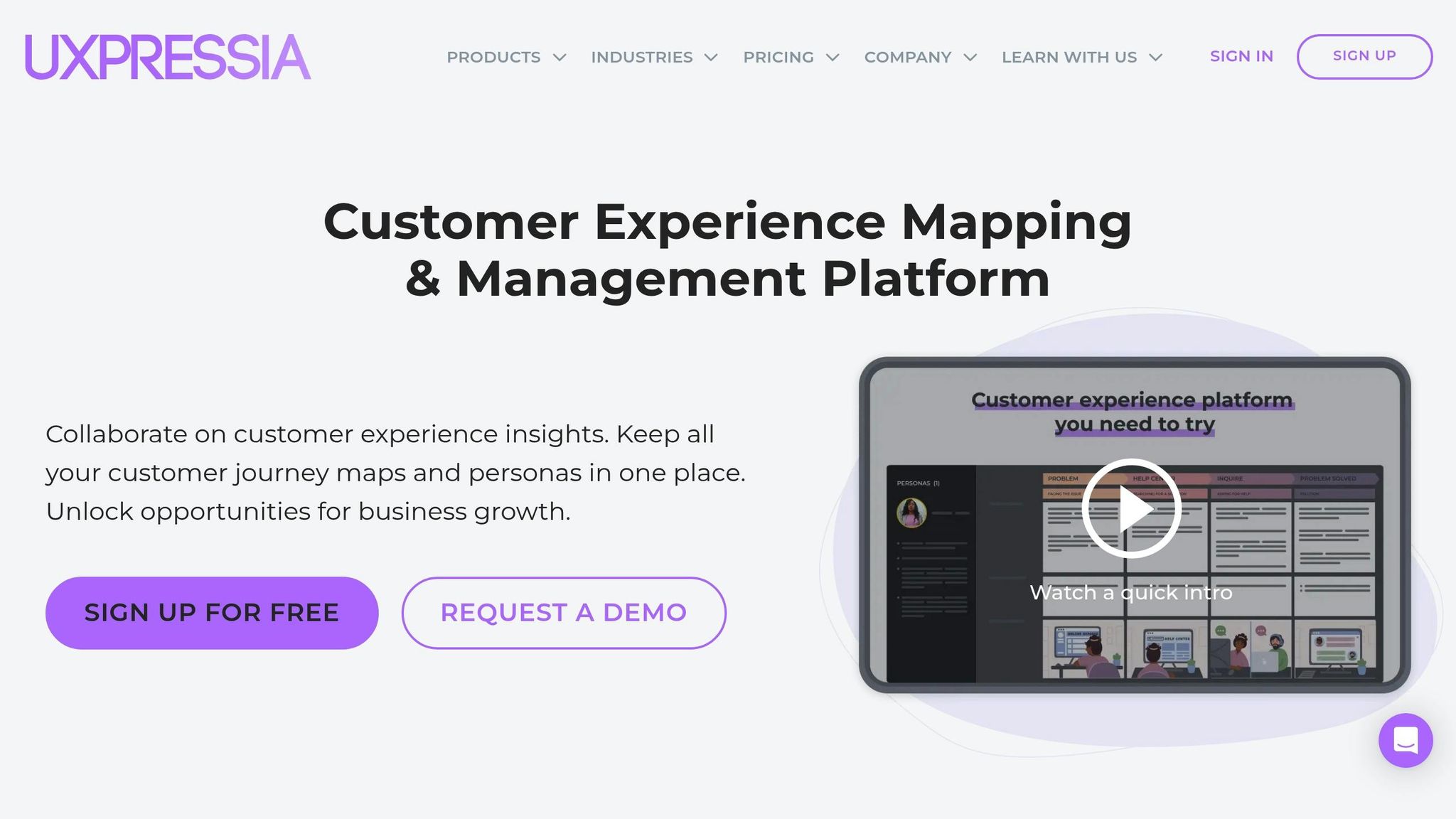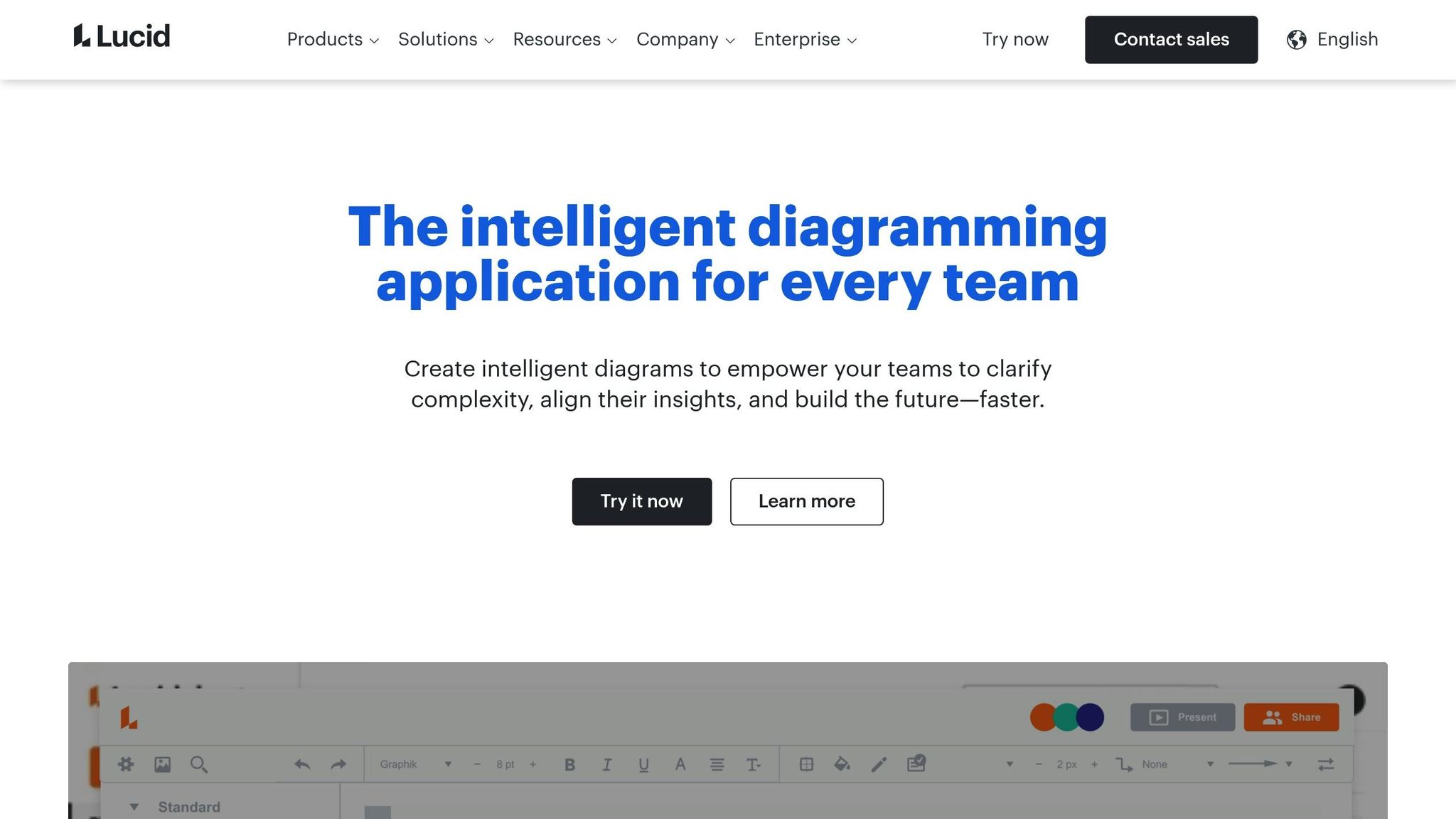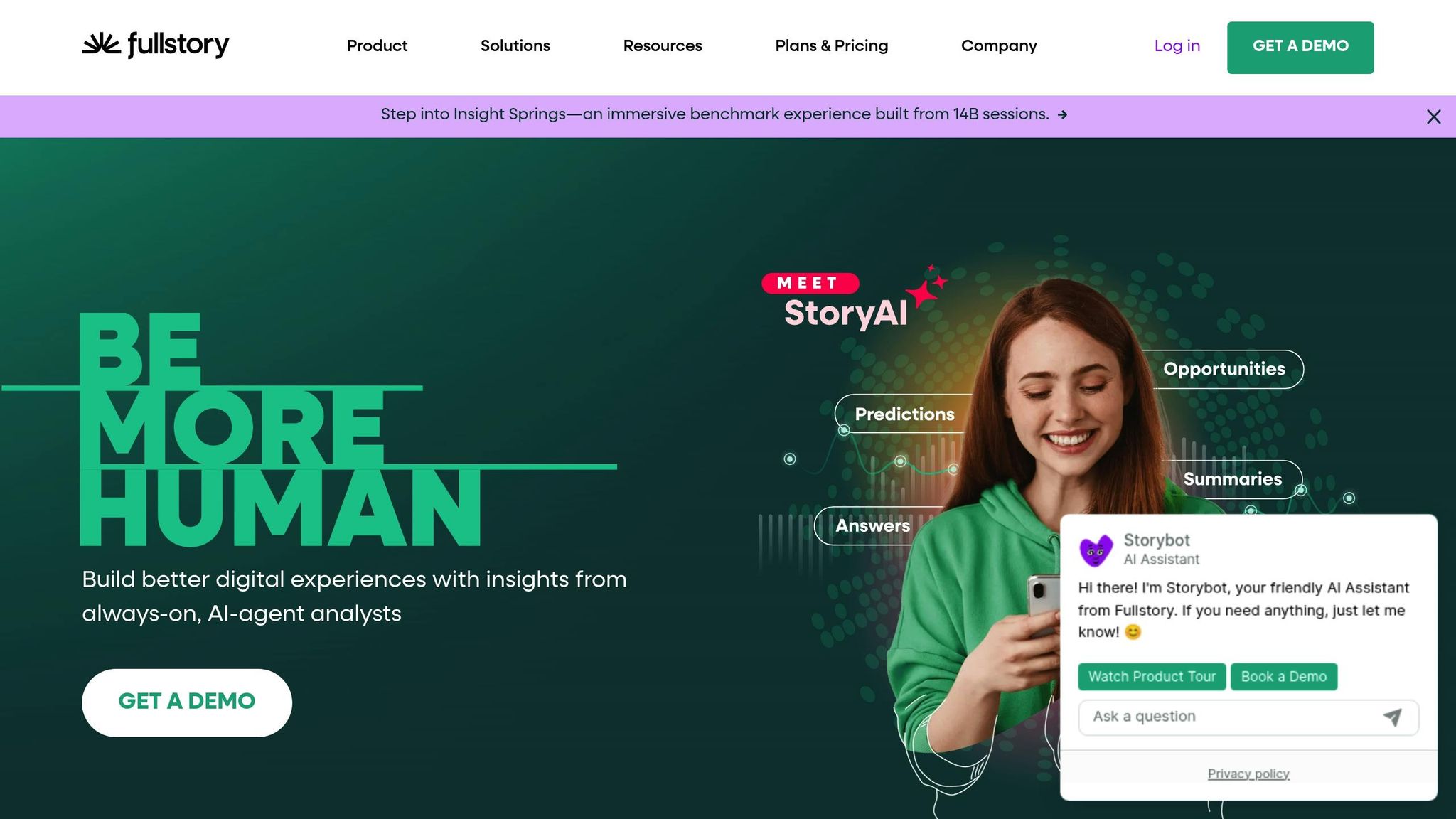Emotional journey mapping helps businesses understand customer feelings throughout their experience, especially in email marketing. This approach focuses on emotions rather than just actions, providing insights to improve customer engagement and loyalty. Tools like EmotionTrack, Smaply, UXPressia, Lucidchart, and Fullstory stand out for their ability to analyze emotional data and integrate with email platforms. Here's what you should know:
- EmotionTrack: Advanced sentiment analysis and CRM integration for personalized email sequences.
- Smaply: Drag-and-drop interface for creating emotional journey maps and detailed customer personas.
- UXPressia: Templates and emotional state tracking for precise targeting.
- Lucidchart: Flexible diagramming for custom emotional journey maps.
- Fullstory: Session replays to identify emotional friction points.
Quick Comparison
| Tool | Key Features | Pricing |
|---|---|---|
| EmotionTrack | Sentiment analysis, multi-channel tracking, CRM integration | $500–$5,000/month |
| Smaply | Visual mapping, persona creation, collaboration | Custom pricing |
| UXPressia | Emotional state tracking, journey templates | Custom pricing |
| Lucidchart | Customizable diagrams, template library | Free to $9.95/month |
| Fullstory | Session replays, advanced analytics | Custom pricing |
These tools help businesses refine email campaigns, improve personalization, and build stronger emotional connections, which can lead to higher ROI and customer loyalty.
Create a Customer Journey Map using Smaply

What to Look for in Emotional Journey Mapping Tools
When choosing emotional journey mapping tools, focus on features that can elevate your email marketing efforts. Considering that 80% of companies view customer journey mapping as crucial, selecting the right tool is essential. Additionally, U.S. data privacy regulations - spanning national, state, and local levels - make compliance a non-negotiable requirement. These considerations set the foundation for evaluating the key features of these tools.
Sentiment Analysis and Data Visualization
The best tools leverage sentiment analysis to convert customer feedback from emails, social media, and websites into actionable emotional insights. With clear, user-friendly dashboards, these tools simplify complex emotional data, helping marketers identify trends that might otherwise be overlooked.
Here’s a compelling stat: companies using AI-powered customer journey mapping tools report a 20–30% boost in revenue growth. To achieve similar results, look for tools that provide real-time sentiment tracking and customizable dashboards that fit seamlessly into your workflow. Integration with your email marketing platforms is another must-have for smooth and efficient operations.
Integration with Email Marketing Platforms
A tool’s integration capabilities are critical for transforming emotional insights into improved email strategies. The most effective tools connect effortlessly with CRM, ERP, and marketing automation software, offering a unified view of customer emotions across all touchpoints.
For example, integrating emotional data with email platforms can significantly enhance personalization. Personalized emails generate six times higher transaction rates. Look for tools that automate email sequences based on customers’ emotional states, ensuring timely and relevant communication.
Multi-channel tracking is another key feature. By monitoring customer interactions across platforms like social media, websites, phone calls, and in-person engagements, you can ensure your email campaigns reflect a complete picture of customer emotions rather than isolated moments.
Additionally, integration should support automated email workflows aligned with the customer journey. Tools that directly map emotional data to your existing processes reduce manual effort and minimize delays in responding to shifting customer emotions. When paired with real-time collaboration features, these integrations can significantly enhance your team’s efficiency.
Collaboration and Real-Time Analytics
Real-time data processing is essential for responding quickly to changing customer needs. Immediate access to current emotional insights allows teams to adjust campaigns before negative sentiments escalate or opportunities are missed.
Collaboration features enhance this process by enabling teams to share insights in real time. Look for tools that support simultaneous editing, comment systems, and role-based access controls to streamline teamwork.
Analytics capabilities are equally important. The right tool will track customer behavior, measure engagement, and highlight areas of disinterest. Dashboards that display emotional trends over time - and even offer predictive insights - can help you stay ahead of customer expectations.
Companies using AI-driven personalization report a 10–15% increase in customer retention rates. As you evaluate collaboration features, ensure the tool is scalable and adaptable to your team’s needs.
Finally, don’t overlook data privacy compliance. With California alone enforcing over 25 state privacy and data security laws, your chosen tool must not only meet these standards but also maintain top-notch performance while managing complex regulations. These features are essential for refining email campaigns and building stronger, lasting customer relationships.
Best Tools for Emotional Journey Mapping
Emotional journey mapping tools turn insights about customer emotions into strategies that make email campaigns more effective. Here are five platforms that take different approaches to analyzing emotional data and improving email performance.
EmotionTrack
EmotionTrack is known for its advanced sentiment analysis, which processes feedback from emails, social media, and websites. It identifies emotional trends across various channels, turning them into actionable insights for email campaigns.
With multi-channel tracking, the tool captures emotional shifts across platforms, giving you a complete picture of a customer’s emotional state before they interact with your emails. This allows you to create messages that truly connect with their feelings rather than relying on assumptions.
EmotionTrack also integrates with CRM systems, automatically updating customer profiles and triggering email sequences based on detected emotions. For example, it can send encouraging messages when frustration is detected or celebratory ones when satisfaction is high. Pricing starts at $500 per month for small businesses and goes up to $5,000 for enterprise-level solutions, making it scalable for businesses of all sizes.
This tool is particularly effective at improving customer satisfaction and loyalty by addressing emotional pain points early. Businesses using similar AI-based mapping tools report efficiency gains of 25–30% and accuracy improvements of up to 90% in predicting customer behavior.
Next, Smaply offers a more visual and team-friendly approach to emotional mapping.
Smaply
Smaply simplifies emotional journey mapping with its drag-and-drop interface, making it easy for non-technical marketers to create detailed maps. Its visual approach allows you to chart emotional highs and lows throughout the customer experience by arranging elements on a canvas.
The tool’s persona creation features help you build detailed customer profiles that include emotional triggers, preferences, and pain points. These profiles form the foundation for email campaigns that address specific emotional needs. Smaply also supports tracking customer interactions at every stage, from sign-ups to post-purchase follow-ups, ensuring no emotional opportunity is missed.
Collaboration is another standout feature. Marketing teams can work together on journey maps in real time, ensuring everyone has a clear understanding of the emotional context and can adjust strategies quickly when customer emotions shift.
UXPressia

UXPressia offers customer journey mapping templates and detailed emotional state tracking, categorizing feelings into specific states like anticipation, frustration, satisfaction, and delight. This level of detail helps marketers design emails that address precise emotional needs instead of broad sentiments.
The platform’s structured frameworks guide you through the mapping process, ensuring you consider timing, context, and emotional intensity. By visualizing emotional transitions, you can identify moments when customers move from positive to negative feelings - or vice versa - and adjust your email strategies to match.
This granular tracking sharpens email targeting, helping you create campaigns that resonate on a deeper emotional level.
Lucidchart

Lucidchart provides a flexible approach to emotional journey mapping with its diagramming capabilities. Unlike tools that rely on rigid templates, Lucidchart allows you to create custom maps that fit your specific email workflows.
The platform includes a library of templates that can be tailored with emotional indicators, sentiment scores, and trigger points relevant to your campaigns. Integration with Microsoft Office and Google Workspace makes it easy to embed these maps into presentations and share them with your team.
By creating detailed flowcharts, Lucidchart helps teams visualize how different emotional states align with email sequences, ensuring consistent and meaningful messaging across all touchpoints.
Fullstory

Fullstory takes a unique approach with session replays, offering a visual look at customer interactions. These replays can reveal moments of confusion, frustration, or satisfaction that traditional metrics might miss.
The platform’s analytics tools go beyond basic data to pinpoint friction points in the customer’s emotional journey. For instance, it can show where users hesitate before clicking a link or how long they linger on certain sections of an email - helping you determine whether the issue is confusion or frustration.
By linking email performance to real user behavior, Fullstory provides a deeper understanding of how your messages impact customers emotionally. This insight can lead to more empathetic and effective email marketing strategies.
Businesses using emotional journey mapping tools like these have seen major benefits, with 85% reporting improved customer satisfaction.
sbb-itb-6e7333f
How Email Service Business Directory Supports Emotional Journey Mapping
Choosing the right email marketing platform can feel like a daunting task. The Email Service Business Directory simplifies this by offering a curated resource where businesses can explore and compare email marketing solutions designed to enhance customer engagement. It serves as a bridge, connecting technical capabilities with insights into customer emotions.
This directory stands out by focusing on platforms that address the emotional aspects of customer journeys. It acknowledges that email plays a pivotal role at every stage of the customer journey, ultimately driving better conversion rates. For instance, while prospects typically convert at a rate of 5–20%, existing customers boast a much higher close rate of 60–70% - a testament to the importance of nurturing relationships through targeted communication.
Find and Compare Email Marketing Platforms
The Email Service Business Directory makes it easy to evaluate and compare email marketing platforms based on their integration features and emotional targeting capabilities. By streamlining this process, businesses can save valuable time.
The directory includes platforms with user ratings and reviews to guide decision-making. For example, it features solutions like Mailchimp (4.5/5 rating from 17.5K reviews), Brevo (4.6/5 rating from 3.1K reviews), and Salesforce Starter (4.4/5 rating from 212 reviews). These insights empower businesses to select a platform that aligns seamlessly with their emotional journey mapping goals.
When exploring options, businesses can focus on key features such as mailing list management, intuitive content editors, customer segmentation, third-party integrations, A/B testing, analytics, and deliverability. This well-rounded approach ensures that the chosen platform not only meets technical needs but also addresses the emotional nuances of customer communication.
The financial benefits of selecting the right platform are also highlighted. Email marketing offers an impressive return on investment, ranging from $32 to $45 for every $1 spent. When paired with emotional journey mapping, this ROI can grow even further by improving targeting precision and fostering deeper connections with customers.
Simplify Tool Selection for Emotional Journey Mapping
The directory goes beyond just listing tools - it prioritizes platforms that strike a balance between functionality and ease of use. By filtering out overly basic or excessively complex solutions, it ensures businesses can focus on tools that truly support emotional journey mapping.
Platforms identified by the directory help brands pinpoint customer touchpoints, enabling the creation of meaningful emotional connections. This is particularly important because email marketing not only engages customers but also nurtures those relationships over time. When guided by emotional insights, these interactions become even more impactful.
The directory highlights platforms with strong integration capabilities and user-friendly segmentation tools, making it easier to align with emotional mapping strategies. Seamless integration is key to ensuring that emotional insights directly inform email campaigns. Paired with tools like EmotionTrack or Smaply, the right email platform can transform emotional data into actionable strategies.
Additionally, the directory provides insights into platforms that excel at segmentation, enabling businesses to craft personalized emails that build stronger relationships and encourage deeper customer engagement. Personalization becomes even more effective when guided by emotional journey mapping, resulting in campaigns that resonate on both logical and emotional levels.
Conclusion
Emotional journey mapping has transformed the way email marketing connects with audiences. The tools we’ve discussed - EmotionTrack, Smaply, UXPressia, Lucidchart, and Fullstory - each bring distinct advantages when it comes to understanding customer emotions and crafting more meaningful interactions.
The numbers speak for themselves. Businesses that use journey maps see performance improvements of up to 200% compared to competitors. Building emotional connections with customers can increase lifetime value by 306% while tripling both recommendations and repeat purchases. When companies truly understand their audience’s emotional needs, they can create personalized experiences that drive conversion rates up by an astounding 500%. And in email marketing specifically, personalized messages deliver transaction rates six times higher than generic ones.
Success stories highlight the power of this approach. For example, Warby Parker identifies five key stages in their customer journey and uses automated, personalized emails for each stage. This strategy has boosted their repeat purchase rates by 30%. Similarly, Allbirds segments its subscribers into New, Returning, and Loyal categories, tailoring email content to each group. This personalization increased their email open rates by 25%.
To make the most of emotional insights, the Email Service Business Directory connects businesses with top email marketing platforms. These platforms not only meet technical needs but also help integrate emotional mapping strategies, ensuring your campaigns resonate deeply with your audience. With email marketing delivering an average return of $36 for every $1 spent, combining emotional journey mapping with the right tools can lead to substantial business growth.
Whether you’re just starting out or fine-tuning your email marketing strategy, pairing emotional mapping tools with the right platform is key. Check out the Email Service Business Directory to find solutions that turn emotional insights into measurable results.
FAQs
How does emotional journey mapping enhance email marketing campaigns?
Emotional Journey Mapping in Email Marketing
Emotional journey mapping is all about understanding the emotional ups and downs customers go through during their interaction with your brand. By tapping into these emotional moments, businesses can craft email content that's not just personalized but also deeply meaningful to their audience.
When your email campaigns align with your customers' emotions, something powerful happens: you build stronger connections. These connections lead to higher engagement and, ultimately, better returns on your marketing investment. Recognizing these emotional touchpoints ensures your emails hit the right notes, making them more relevant and impactful for your audience.
What key features should I look for in an emotional journey mapping tool for my email marketing strategy?
When selecting an emotional journey mapping tool, prioritize features that allow you to understand customer emotions and clearly illustrate their experiences. The right tool should enable you to:
- Monitor emotional reactions across various touchpoints.
- Spot pain points and positive moments within the customer journey.
- Pinpoint areas for improvement to enhance engagement.
With these features, you'll be better equipped to design email campaigns that resonate with your audience on an emotional level.
How do emotional journey mapping tools stay compliant with U.S. data privacy laws?
Emotional journey mapping tools ensure compliance with U.S. data privacy laws by incorporating strong security measures and following established standards like GDPR and ISO 27001. Features such as encryption and access controls are commonly built in to safeguard sensitive customer information.
Many of these platforms also meet U.S.-specific regulations, including the California Consumer Privacy Act (CCPA). This alignment promotes transparency and accountability in how customer data is collected, stored, and utilized.


